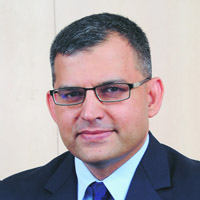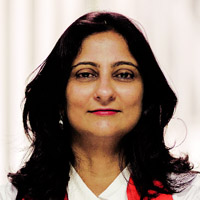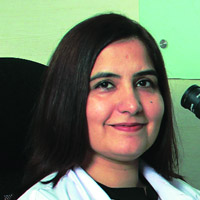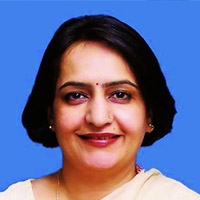Having evolved over the last two decades, the tissue diagnostics sector is going to gain new heights backed by rising incidence of cancer By Sanjiv Das
World over, anatomic pathology has undergone a paradigm shift as cancer incidents are growing exponentially. This, in turn, is furthering the expansion of the field of clinical pathology. We are now witnessing a steady convergence of anatomic and molecular pathology, increased use of liquid biopsy for cancer detection, and digitisation of pathologies. With computational pathology already gaining momentum, there is a growing emphasis on integrated bioinformatics and
analystics.

All these changes indicate an extremely bright future for the field of tissue diagnostics and its market. As per experts, the tissue diagnostics market has evolved over the last two decades with more sophisticated equipment entering into the market, eventually making life easier for pathologists and clinicians.
A report released by Markets and Markets mentions that the global tissue diagnostics market is expected to grow at a CAGR of 6.9 per cent from $3.6 billion in 2017 to reach $5.1 billion in 2022. The growth is likely to be driven by the rising
incidence of cancer and technological innovations in tissue diagnostics. Let’s understand the key drivers, opportunities and challenges that will determine the future of tissue diagnostics in India.
The evolution
Tissue diagnostics, as the name suggests, involves removal of tissue (at a micro level) from the patient’s body, which is then processed, analysed and tested under the microscope to detect diseases such as cancer. In medical parlance, tissue diagnostics refer to surgical pathological evaluation of tissues of the body. The concept started as a morphological assessment and evaluation of the surgically excised specimen using basic techniques of histopathology.
Says Dr BS Ajaikumar, Chairman and CEO, HealthCare Global Enterprises, “Tissue diagnosis is one of the gold standards for cancer diagnosis. The technique helps in determining the cause and effect of the disease in a patient. It is an essential part of decision making for proper care-giving. Without an accurate diagnosis, proper treatment cannot be given to the patient.”

Speaking about the evolution of the field, Dr Harish Pillai, CEO, Aster Hospitals & Clinics (India) explains, “Over time, tissue diagnosis has gradually evolved and encompassed into higher and upgraded ancillary technologies like Immunohistochemistry (IHC), Immunofluorescence (IF), Fluorescence in situ hybridisation (FISH), Comparative genomic hybridisation (CGH/ Tissue Micro arrays) and finally, the much talked about next-generation sequencing (NGS). This evolution has been in accordance with the newer therapeutic and prognostic upgradations from the rapidly changing domain of clinical practice.”
The sector has also witnessed phenomenal changes as evolution in cancer treatment procedures helped to drive the market to new heights. Anu Acharya, CEO, Mapmygemone, believes, “Tissue diagnostics started out as generalised procedures, wherein biopsy samples would be sent to labs for further tests, usually post-surgery. Today, many physicians use this technology to decide on the care and treatment plan, to figure out if a surgery is required. With increasing demand and growing technology for ‘personalised medicine,’ we have seen great changes in this segment.

Similarly, Dr Ajaikumar adds, “The gradual increase in the awareness campaigns, technological research advancements and improving healthcare infrastructure is paving the way for a better market opportunity in tissue diagnostics. The market is also segmented into pre-analytical and advance stains on the bases of examination time.”
Dr Kirti Chadha, Sr Vice President, Metropolis Healthcare, says, “The major factors that are driving the growth of tissue diagnostic market are growing incidents of cancer, organ donation and transplant movement, and rising awareness and acceptance of personalised medicine and companion diagnostics where every patient is being treated individually and advance diagnostics plays a huge role.”
Dr Rajeev Vijayakumar, Consultant Medical Oncologist, Haemato-oncologist and BMT physician, BGS Gleneagles Global Hospital says, “Investigations have become more accessible – even in remote places – with improvement in logistics networks. The same phenomenon is seen worldwide, propelling the diagnostics market forward.”

Leading markets North America and Europe are leading in tissue diagnostics segment. Although the sector had been largely overlooked in the past, India is now quickly catching up. Dr Abha K Sabhikhi, Technical Director, SRL Diagnostics CoE & SRL Fortis Labs, believes, “Though dominated by North America and Europe, the tissue diagnostics market is shifting its focus to the Asian market and particularly India. Overall, the Indian diagnostic market has been growing at nearly 15-20 per cent and currently is estimated to be worth Rs 40,000 crore. In addition to Japan and China, we expect to see a growth spurt in India with expectations of the highest CAGR from this region. These expectations are leading to a rising focus of major players in emerging Asian countries.”
Growth prospects in India
As stated earlier, higher incidence of cancer globally, growing awareness of genetics and heritability of cancers have been the key drivers fuelling the growth of the sector worldwide. Also, a rise in companion diagnostics for targeted therapies in areas such as transplant pathology, and increased organ transplantations and increased use of biomarkers for disease diagnosis are propelling growth. Tissue diagnostics represent overall 4-5 per cent of the total IVD market.
Dr Pillai says, “Not only the rising incidence of cancer, but non-neoplastic acquired conditions like thalassemia, inflammatory bowel disease, malabsorption syndromes, GLUT-4 deficiency associated with inherited lactose tolerance have led to the growth of the tissue diagnostic market.”

According to Acharya, “There are several areas where tissue diagnostics has proven beneficial. One good example would be fertility treatments – genetic assessment for implantation failures in IVF cases through Endometrial Receptivity Analysis, and even diagnosis of female genital tuberculosis.”
In India, hospital with increased focus on oncology, is likely to fuel the growth of tissue diagnostics segment. Elaborating further, Dr Sabhiki says, “Large network labs are also consolidating the segment with availability of quality test results and the early introduction of newer diagnostic tests that are made available across all geographies. Tissue diagnosis is critical for early diagnosis to ensure graft survival.”
Dr Vijayakumar says, “Tissue diagnostics range from biopsy specimens, immunohistochemistry, molecular diagnostics and genetic studies. The purchase power of the average Indian has improved to a great extent in the last decade, running parallel to the advances in the laboratory.”

In India, pricing is an issue in the tissue diagnostics sector. While talking about the cost-effectiveness the kind of RoI which the tissue diagnostic businesses can gain, Dr Chadha mentions, “Tissue diagnostics is largely a fragmented market for any hospital or individual players. The number of samples are not as huge as compared to the other segments in pathology, thus making it difficult for even large hospitals and large players to offer last mile services with best technologies and best set of histopathologist.” Dr Sabhikhi also agrees, “In India cost would continue to be a challenge.”
Digitisation of pathologies
As mentioned above, computerisation and digitisation of pathologies will play a crucial role in the advancement of this segment. For example, a digital pathology enables pathologists to view and diagnose digital images of surgical pathology slides prepared from biopsied and resectioned tissue. This improves clinical workflows, ensures accuracies in clinical outcomes and can help making critical health information available to patients and healthcare professionals faster and at lower cost. It will also resolve the problem of shortage of skilled surgical pathologists and sub speciality experts as well.

Says Dr Sabhikhi, “AI and machine-based learning would also play a role in the future. This cannot replace the surgical pathologist but would help the surgical pathologist make a more conclusive diagnosis. Largest growth share would be from the immunohistochemistry segment as reflex testing becomes more prevalent. Growth in personalised medicine with companion diagnostics is also foreseen.”
Dr Ajaikumar reckons, “Through the mapping of genetic compositions in various cancers, prediction can be done through extrapolation of these onto imaging by AI-based platform, and non-invasively predict the tumor biology. This would be a significant benefit to the patients not only in terms of cost, but also being a non-invasive procedure.”
According to Dr Vijayakumar, self learning AI-based software will play an important role in the tissue diagnostics segment. Besides, liquid biopsies and next generation sequencing will have the potential to bring in a revolution in the tissue diagnostics segment.
Dr Sudipta Roy, Director, Lab Services, Amri Group of Hospitals says, “Immunohistochemistry to molecular genomics, proteomics, image analyser and perhaps AI, cell free DNA, advances in next gen sequencing, are few of the technological advancements that seem promising.”
Moreover, Acharya feels that the use of technology can enable the field to further resolve many complex medical ailments in future. “Where biochemical tests may yield false positive and false negative may result in extensive economic and social implications, tissue (molecular) diagnostics can help in accurate treatment as well as identification of novel variants to create datasets for screening, diagnostics and treatment.”
Dr Chadha believes, “Technological advancements in the segment of tissue diagnostics is to support the complex workflow from specimen receipt to anatomic pathology report transmission, that is, to improve diagnosis both in terms of pathologists’ efficiency and with new information. The future paradigm of pathology will be digital. Instead of conventional microscopy, a pathologist will perform a diagnosis through interacting with images on computer screens and performing quantitative analysis.”
The future outlook
Though the tissue diagnostics market has seen an upsurge due to increasing opportunities in digital pathology, high demand for companion and molecular diagnostics, growth of personalised medicines challenges like limited customer base for tissue diagnostics, are hindering its growth prospects.
Challenges also include shortage of qualified pathologists, consolidation of laboratories leading to shrinkage of the customer base, reimbursement cuts and competition from novel technologies such as liquid biopsy and next generation sequencing.
But at the same time, technology providers have been engaged in the development of new innovative technologies backed by automation, AI and more. To tap business prospects in this segment, technology providers are also looking for partnerships with pharmaceutical companies to build information management systems in order to deepen solution expertise for success in the long run.
In future, experts should implement new technological innovations which will help the tissue diagnostics sector bring in a revolution in solving complex medical conditions. There is a clear need for more research initiatives in this space to further propel growth in this sector.
- Advertisement -


